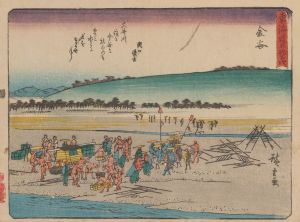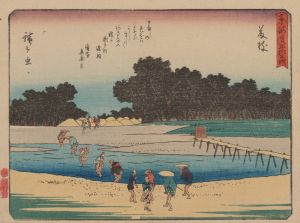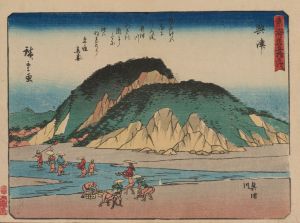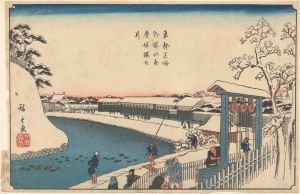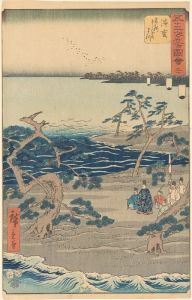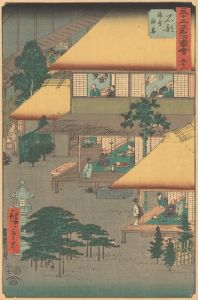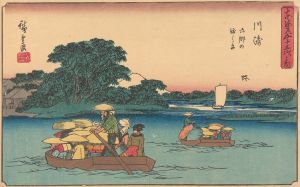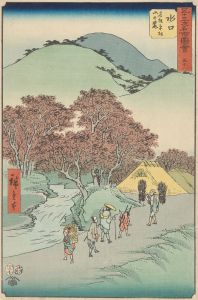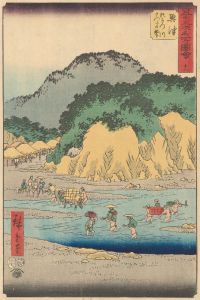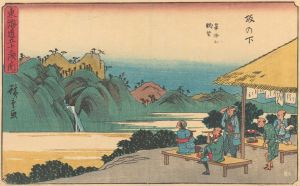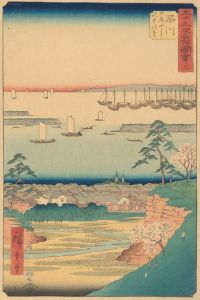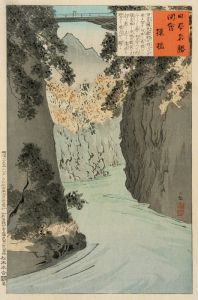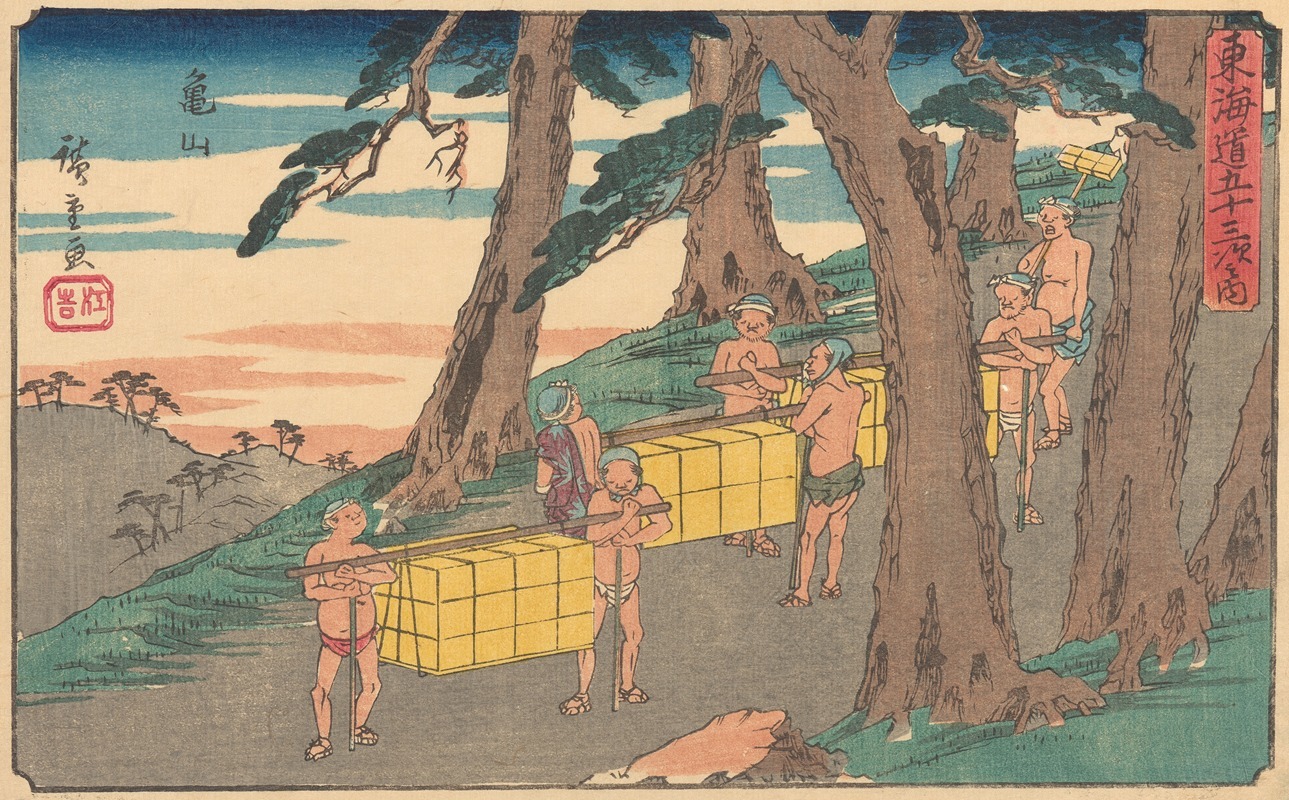
Kameyama
A hand-painted replica of Andō Hiroshige’s masterpiece Kameyama, meticulously crafted by professional artists to capture the true essence of the original. Each piece is created with museum-quality canvas and rare mineral pigments, carefully painted by experienced artists with delicate brushstrokes and rich, layered colors to perfectly recreate the texture of the original artwork. Unlike machine-printed reproductions, this hand-painted version brings the painting to life, infused with the artist’s emotions and skill in every stroke. Whether for personal collection or home decoration, it instantly elevates the artistic atmosphere of any space.
Andō Hiroshige, a renowned Japanese ukiyo-e artist of the Edo period, is celebrated for his landscape prints and depictions of the natural world. One of his notable works is "Kameyama," which is part of the famous series "The Fifty-three Stations of the Tōkaidō" (Tōkaidō Gojūsan-tsugi no Uchi). This series, created between 1833 and 1834, is among Hiroshige's most acclaimed contributions to the art of ukiyo-e and showcases the journey along the Tōkaidō road, the vital route connecting Edo (modern-day Tokyo) to Kyoto.
"Kameyama" is the 47th station in this series and captures the essence of the Kameyama-juku, a post station located in present-day Kameyama City in Mie Prefecture. The print is celebrated for its atmospheric depiction of a snowy landscape, a testament to Hiroshige's skill in portraying weather and seasonal changes. The scene is set in winter, with snow blanketing the ground and the roofs of the structures, creating a serene and tranquil atmosphere. The composition is marked by the presence of travelers making their way along the road, their figures small against the vastness of the landscape, which emphasizes the scale and majesty of nature.
Hiroshige's use of color and line work in "Kameyama" is particularly noteworthy. The subtle gradations of blue and white in the snow and sky, along with the delicate lines used to depict the trees and figures, demonstrate his mastery of the ukiyo-e technique. This print, like many others in the series, reflects Hiroshige's ability to convey a sense of movement and the passage of time, as the travelers progress along their journey.
The "Fifty-three Stations of the Tōkaidō" series was highly popular during Hiroshige's lifetime and remains influential in the art world today. It not only provides a visual record of the Tōkaidō road and its stations but also offers insight into the culture and daily life of the Edo period. Hiroshige's work, including "Kameyama," played a significant role in shaping Western perceptions of Japanese art, particularly during the Japonisme movement in the late 19th and early 20th centuries.
Hiroshige's landscapes, characterized by their poetic and lyrical qualities, have inspired countless artists and continue to be celebrated for their beauty and technical excellence. "Kameyama" stands as a prime example of his ability to capture the fleeting beauty of nature and the human experience within it. Through his art, Hiroshige invites viewers to appreciate the harmony between people and their environment, a theme that resonates across cultures and time periods.





